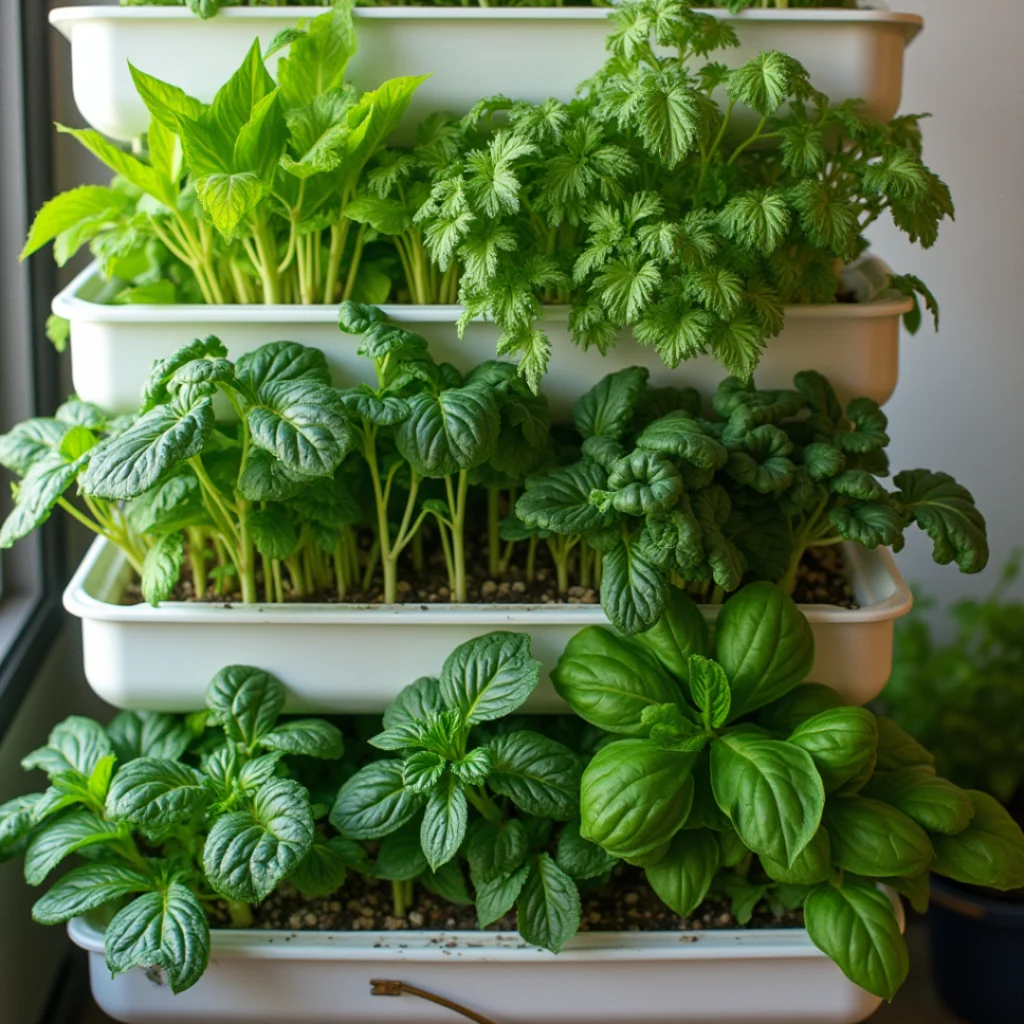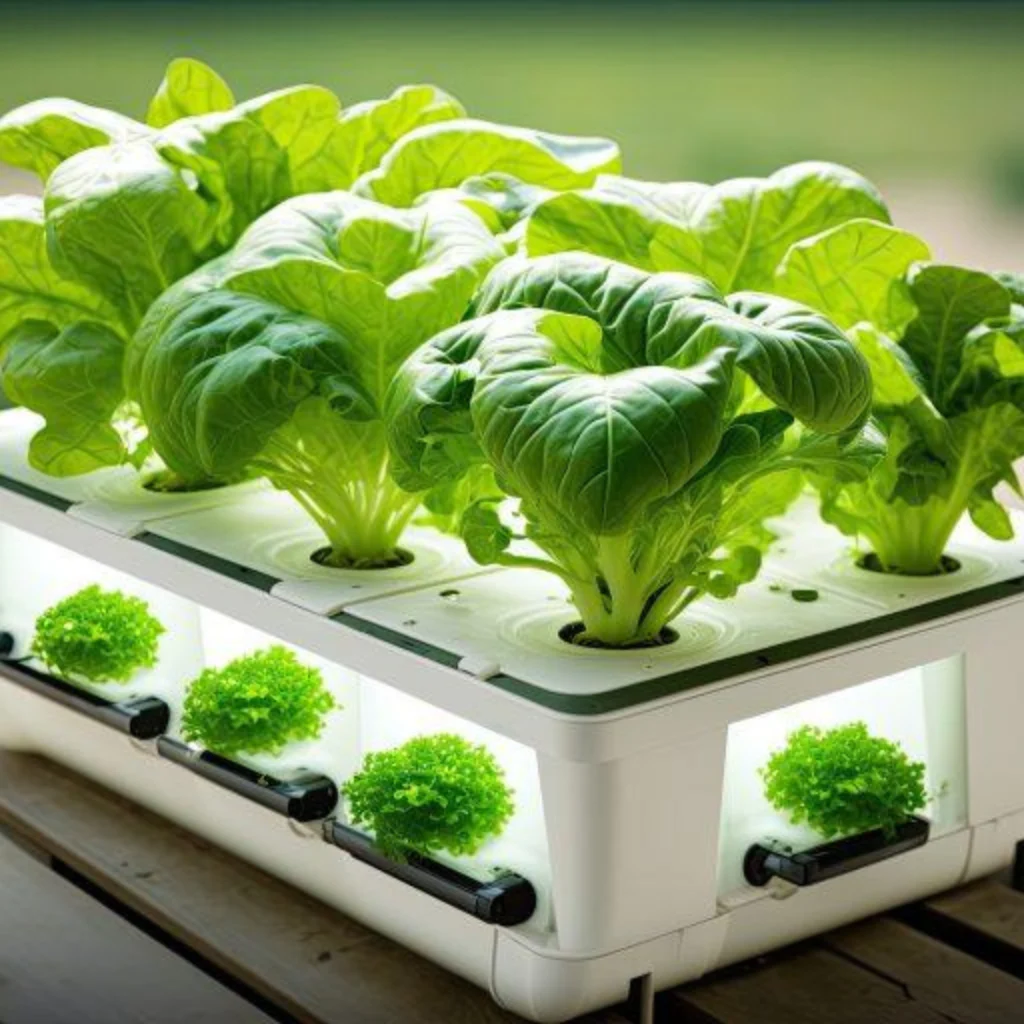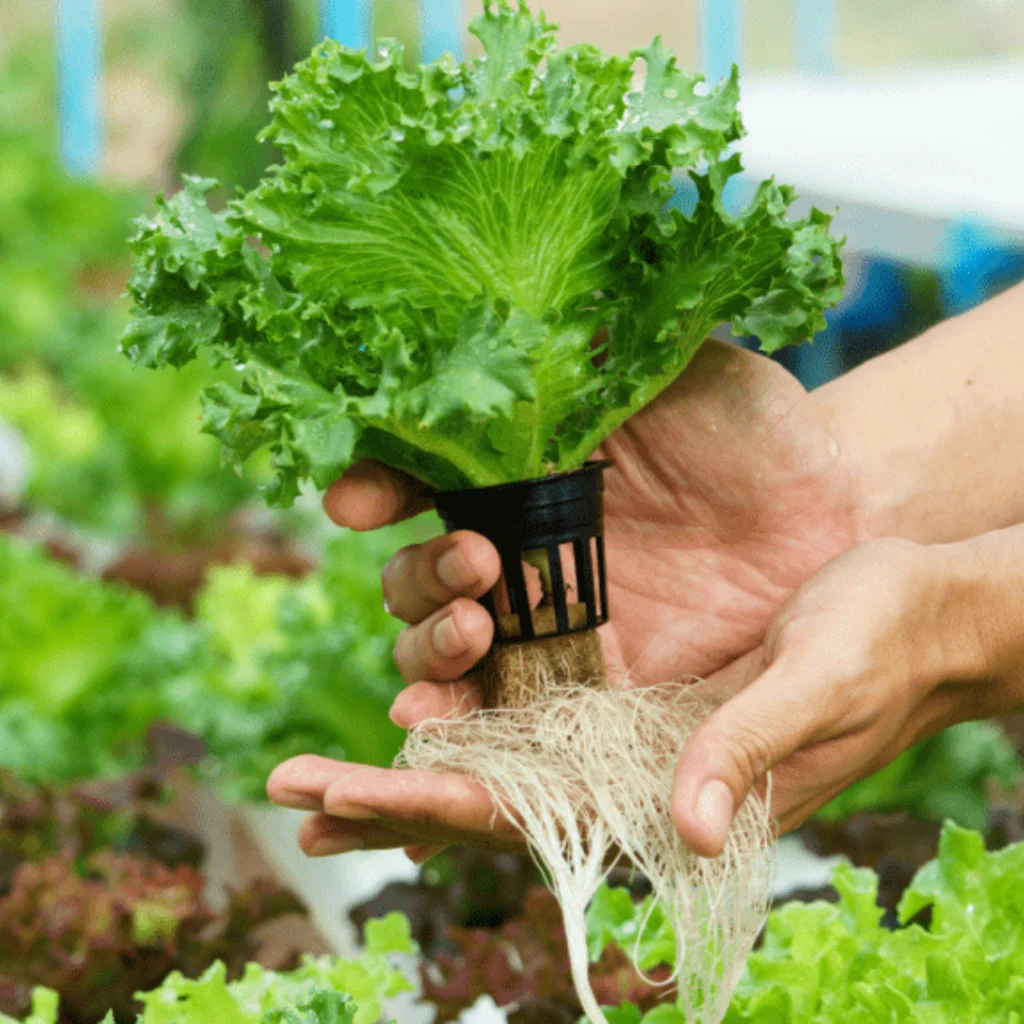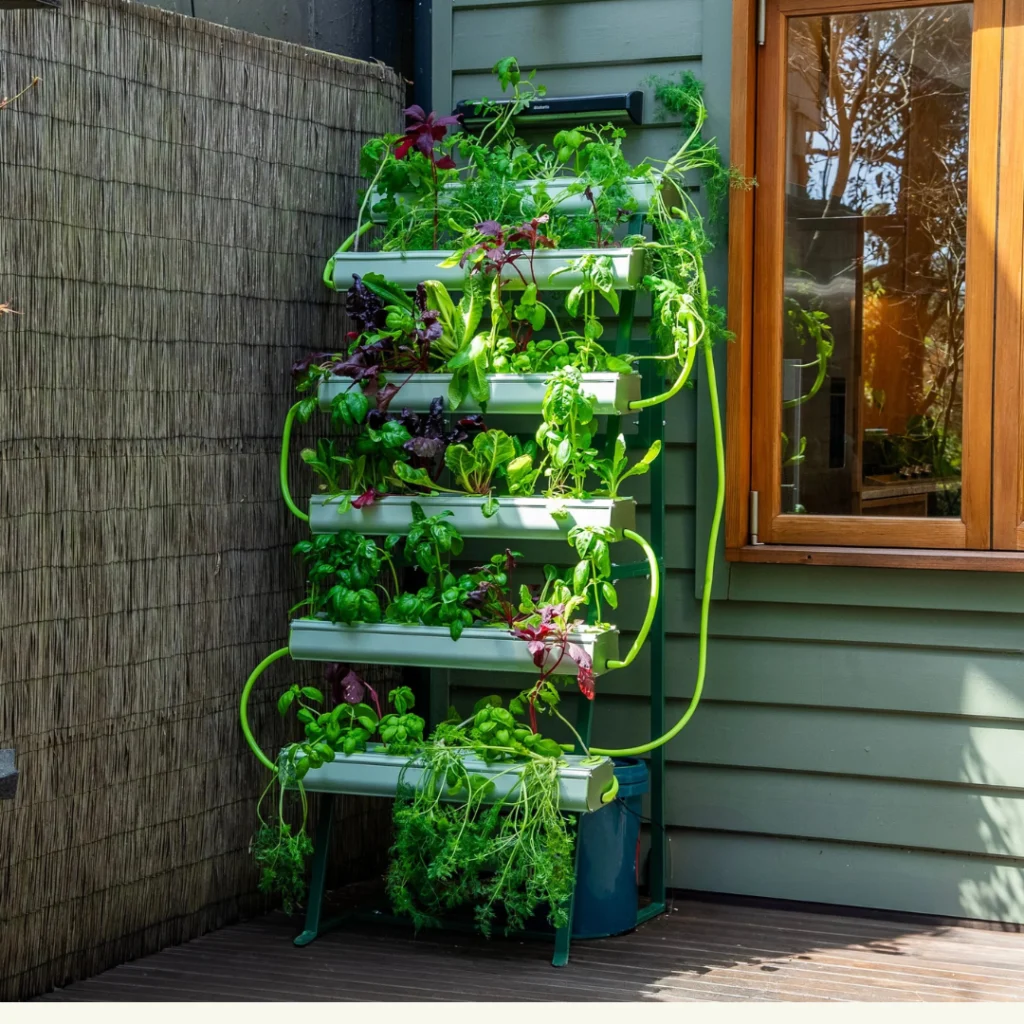Hydroponics Growing System : 6 Best steeps to Soilless Gardening
Hydroponics Growing System is revolutionizing how people grow fresh produce year-round, regardless of climate conditions. This method eliminates the need for soil, allowing plants to thrive in a controlled environment using a nutrient-rich water solution. Whether you’re a beginner or an experienced gardener, setting up a hydroponic garden offers faster growth, higher yields, and efficient space utilization.
This comprehensive guide will walk you through everything you need to know about hydroponic growing systems, from choosing the best hydroponic indoor garden setup to selecting the right hydroponic grow kit. You’ll learn step-by-step setup instructions, how to troubleshoot common issues, and expert strategies to maximize plant growth and yields using an efficient grow system hydro.
Table of Contents
1. Introduction to Hydroponics
What is Hydroponics ?
Hydroponics is a soilless method of plant cultivation where plants receive all essential nutrients through a water-based nutrient solution. Instead of soil, hydroponic systems use growing mediums like Rockwool, clay pebbles, or coco coir to support plant roots.
Why Choose Hydroponics ?
Hydroponic gardening offers several benefits over traditional soil-based gardening :
✅ Faster Growth – Plants grow 30-50% faster in a controlled environment.
✅ Higher Yields – Optimized nutrient absorption leads to more abundant harvests.
✅ Space-Saving – Vertical and compact designs allow indoor gardening even in small apartments.
✅ Water Conservation – Hydroponic systems use up to 90% less water than traditional gardens.
✅ Pest Control – No soil means fewer pests, reducing the need for pesticides.
Types of Hydroponic Growing Systems
There are several hydroponic techniques, each with its own advantages :
- Deep Water Culture (DWC) : Plants are suspended in nutrient-rich water, oxygenated by air pumps.
- Nutrient Film Technique (NFT) : A thin layer of nutrients flows continuously over the roots.
- Ebb and Flow (Flood and Drain) : Periodically floods plant roots with nutrients and then drains.
- Drip System : Nutrients are dripped directly onto plant roots in a controlled manner.
- Aeroponics : Plants are suspended in air, misted with nutrients at regular intervals.
2. Choosing the Right Plants for Hydroponics
While many plants can be grown hydroponically, some thrive better than others.
Best Plants for Hydroponics
🌿 Leafy Greens : Lettuce, spinach, kale, Swiss chard.
🌱 Herbs : Basil, mint, parsley, cilantro, oregano.
🍅 Fruiting Plants : Tomatoes, peppers, cucumbers, strawberries.
🚫 Avoid These Plants : Root vegetables (carrots, potatoes, onions) don’t grow well in hydroponic systems due to their need for deep soil.
Growth Duration of Hydroponic Crops
- Lettuce & Spinach : 30-45 days
- Basil & Cilantro : 20-30 days
- Tomatoes & Peppers : 60-80 days
- Strawberries : 60-90 days

3. Step-by-Step Guide to Setting Up a Hydroponic System
Step 1 : Choose Your Hydroponic System
Decide between Deep Water Culture (DWC), NFT, Aeroponics, or a Drip System based on space, budget, and experience level.
Step 2 : Gather Your Equipment
You’ll need:
✔ A hydroponic grow kit (or DIY setup)
✔ Growing medium (Rockwool, clay pebbles, or coco coir)
✔ pH meter to monitor acidity levels
✔ Nutrient solution tailored to your plant’s needs
✔ Air pump (for DWC systems)
✔ LED grow lights if growing indoors
Step 3 : Prepare the Nutrient Solution
- Mix hydroponic nutrients in water.
- Maintain a pH level between 5.5 and 6.5 for proper nutrient absorption.
Step 4 : Transplant Your Seedlings
- Start seeds in Rockwool cubes or a seedling tray.
- Once sprouted, transfer them to your hydroponic system.
Step 5 : Provide Adequate Lighting
For indoor hydroponic gardens, use LED grow lights for 14-16 hours per day.
Step 6 : Monitor & Maintain Your System
- Check pH and nutrient levels daily.
- Change nutrient solution every 1-2 weeks.
4. Essential Care & Maintenance
To keep your hydroponic garden thriving, follow these tips:
🟢 Monitor pH & EC Levels: Maintain a pH of 5.5-6.5 and check the electrical conductivity (EC) to ensure plants get the right nutrient concentration.
🟢 Oxygenate the Roots: Use an air pump to prevent root rot.
🟢 Prevent Algae Growth: Keep reservoirs covered and avoid direct sunlight exposure.
🟢 Flush the System: Clean your hydroponic system every month to prevent blockages and salt buildup.

5. Common Hydroponic Problems & Solutions
🚨 Problem : Yellowing Leaves
✅ Solution : Check nutrient levels and adjust pH balance.
🚨 Problem : Root Rot
✅ Solution : Increase aeration using an air pump and remove affected roots.
🚨 Problem : Algae Growth
✅ Solution : Block light from reaching nutrient reservoirs.

6. Harvesting & Maximizing Your Yield
💡 Harvest leafy greens by cutting outer leaves and allowing the plant to regrow.
💡 Pick tomatoes and peppers when fully ripened for the best flavor.
💡 Use a hydroponic tower system to grow more in less space.
Image Description:
A gardener harvesting fresh hydroponic lettuce and tomatoes.
7. Final Thoughts & Call to Action
Hydroponic gardening is an efficient, space-saving, and water-conserving method that allows year-round cultivation. Whether you’re a beginner or experienced grower, hydroponics offers a sustainable solution for producing fresh food at home.
🎯 Get started today ! Invest in a hydroponic grow kit and start growing fresh vegetables indoors.

8. Conclusion :
Why Hydroponics is the Future of Gardening from Home ?
The Hydroponics Growing System is transforming the way people cultivate fresh produce, offering a soilless, space-efficient, and highly productive alternative to traditional gardening. Whether you’re a beginner setting up a hydroponic indoor garden or an experienced grower optimizing your grow system hydro, this method provides numerous benefits, including faster growth, higher yields, and reduced water consumption.
By using hydroponic towers, nutrient-rich water solutions, and LED grow lights, anyone can enjoy fresh vegetables, herbs, and fruits year-round, regardless of climate conditions. Plus, with fewer pests and no need for harmful pesticides, hydroponic gardening promotes cleaner and healthier food production.
As technology advances, hydroponic grow kits and automated systems make it easier than ever to start gardening at home. Whether you have limited space, want to maximize yield, or simply wish to enjoy gardening without soil, hydroponics is a smart and sustainable solution.
Now is the time to embrace gardening from home with hydroponics. Start your journey today with a hydroponic grow system and experience the future of efficient, eco-friendly gardening ! 🌱🚀
9. FAQs :
1. What is a hydroponics growing system, and how does it work ?
A hydroponics growing system is a method of growing plants without soil, using a nutrient-rich water solution to deliver essential minerals directly to plant roots. The system provides controlled pH levels, oxygenation, and nutrient delivery, ensuring faster growth and higher yields compared to traditional gardening.
2. What are the benefits of using a hydroponic garden instead of soil gardening ?
Hydroponic gardening offers several advantages:
✅ Faster plant growth (30-50% quicker than soil)
✅ Higher yields due to direct nutrient absorption
✅ Water efficiency (uses up to 90% less water)
✅ No weeds or soil-borne pests
✅ Ideal for small spaces, including hydroponic indoor gardens
3. What is the best hydroponic system for beginners?
For beginners, the Deep Water Culture (DWC) or a hydroponic tower system is the easiest to set up and maintain. These systems require minimal components and are cost-effective while delivering excellent plant growth results. A hydroponic grow kit is also a great option for a hassle-free start.
4. What plants grow best in a hydroponic indoor garden ?
The best plants for hydroponics gardening from home include:
🌱 Leafy greens – Lettuce, spinach, kale, Swiss chard
🌿 Herbs – Basil, mint, cilantro, oregano
🍅 Fruiting plants – Tomatoes, cucumbers, peppers, strawberries
5. How often should I change the nutrient solution in my hydroponic system ?
It’s recommended to change the nutrient solution every 1-2 weeks, depending on plant growth and water usage. Regularly checking pH levels (5.5-6.5) and EC (electrical conductivity) levels ensures plants receive optimal nutrition.
6. What are the most common problems in hydroponics, and how can I fix them ?
🚨 Yellowing Leaves ? → Check pH levels and adjust nutrients.
🚨 Root Rot ? → Increase aeration with an air pump and remove affected roots.
🚨 Algae Growth ? → Use opaque containers to block light exposure.
🚨 Slow Growth ? → Adjust LED grow light intensity and nutrient mix.
7. Do hydroponic plants need sunlight or artificial light ?
If growing indoors, hydroponic plants need LED grow lights to replace natural sunlight. Ideally, plants should receive 14-16 hours of artificial light per day. If placed outdoors, a hydroponic tower or grow system hydro can use natural sunlight efficiently.
8. How much does it cost to set up a hydroponic grow system hydro ?
The cost varies depending on the system :
💰 Small hydroponic indoor garden : $50 – $150
💰 Medium DIY hydroponic system : $200 – $500
💰 Large-scale hydroponic farm : $1,000+
9. Can I use organic nutrients in a hydroponic growing system?
Yes, you can use organic nutrients in a hydroponic growing system, but they require more careful management than synthetic nutrients. Organic fertilizers, such as compost teas, fish emulsion, and seaweed extracts, provide essential nutrients, but they can also introduce unwanted bacteria or clog hydroponic pumps and tubing.
To successfully use organic nutrients in a hydroponic indoor garden, follow these tips:
✅ Use water-soluble organic nutrients specifically designed for hydroponics.
✅ Install a fine mesh filter to prevent blockages in the system.
✅ Aerate the nutrient solution using an air pump to prevent stagnation.
✅ Monitor pH and EC levels frequently, as organic nutrients can alter water chemistry.
While synthetic hydroponic solutions provide precise nutrient control, organic options can enhance plant flavor and sustainability. If you’re using a hydroponic tower or grow system hydro, ensure proper filtration to keep your system running efficiently with organic nutrients.

